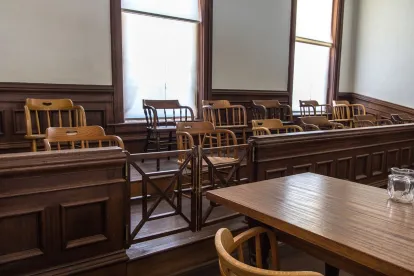The US Court of Appeals for the Federal Circuit affirmed in part, vacated in part and remanded a district court decision after concluding that a jury instruction on the objective indicia of nonobviousness that failed to specify all indicia on which evidence had been received constituted prejudicial legal error. Inline Plastics Corp. v. Lacerta Group, LLC, Case Nos. 22-1954; -2295 (Fed. Cir. Mar. 27, 2024) (Taranto, Chen, Hughes, JJ.)
Inline Plastics owns a patent family pertaining to containers with specific tamper-proof features and methods of producing these containers using thermoformed plastic. The invention is intended to deter unauthorized tampering with products in the containers. These tamper-proof features serve to prevent theft and product loss and maintain consumer confidence in product integrity.
Inline sued Lacerta Group for patent infringement over its tamper-proof technology. The district court made several significant pretrial rulings, including a claim construction order, and granted Inline’s motion for partial summary judgment of infringement on some of the asserted claims. During trial, Inline voluntarily withdrew certain claims, and the jury returned a verdict declaring all remaining claims (even those on which summary judgment had been granted) invalid and not infringed. After trial, Inline sought partial final judgment, which was granted, but also motioned for judgment as a matter of law and a new trial on invalidity. The district court denied Inline’s motions. Both Inline and Lacerta appealed.
Inline argued that it was entitled to judgment as a matter of law of no invalidity and that an error in the jury instructions requires a new trial on invalidity. Lacerta cross-appealed, challenging the denial of attorneys’ fees and the “without prejudice” dismissal of certain patent claims that Inline voluntarily dropped from its asserted-claims list near the end of trial.
The Federal Circuit rejected Inline’s argument for judgment as a matter of law of no invalidity but agreed with Inline that the jury instruction on the objective indicia of nonobviousness constituted prejudicial legal error. The Court determined that the jury could have reasonably found obviousness and rejected Inline’s three arguments against it. First, Inline argued deficiencies in Lacerta’s prior art references and expert testimony, but the Court found these arguments unpersuasive. Second, Inline challenged Lacerta’s evidence of motivation to combine references, but the Court found enough support to prove a motivation to combine. Third, Inline argued that Lacerta’s challenge failed because there was no rebuttal or opinion on objective-indicia evidence. The Court dismissed this argument, explaining that the absence of such testimony did not necessarily discredit the patentee’s evidence on nonobviousness. According to the Court, Inline failed to explain why the jury could not reasonably assign little weight to its objective-indicia evidence, which led the Court to reject Inline’s categorical argument based on the absence of expert testimony from Lacerta’s side.
However, the Federal Circuit agreed with Inline’s argument for a new trial on invalidity. The Court explained that jury instructions must be legally correct and sufficiently comprehensive to address disputed evidence. The Federal Circuit concluded that the district court’s objective-indicia instruction constituted legal error because it failed to encompass Inline’s evidence presented during trial. The disputed jury instruction regarding objective indicia of nonobviousness mentioned only commercial success and long-felt need and no other objective indicia for which there was record evidence. The Court found that Inline properly preserved its objection regarding the inadequate jury instructions and explained that the error in the instruction could have affected the jury’s decision on invalidity.
Lacerta argued that the district court erred in dismissing Inline’s late-withdrawn patent claims without prejudice and in denying its motion for attorneys’ fees. The Federal Circuit vacated both rulings for further consideration on remand.
Practice Note: This case highlights the importance of ensuring accurate and comprehensive jury instructions in patent trials. Practitioners should be proactive in objecting to erroneous instructions and advocating for corrections to prevent prejudicial errors.



 />i
/>i

